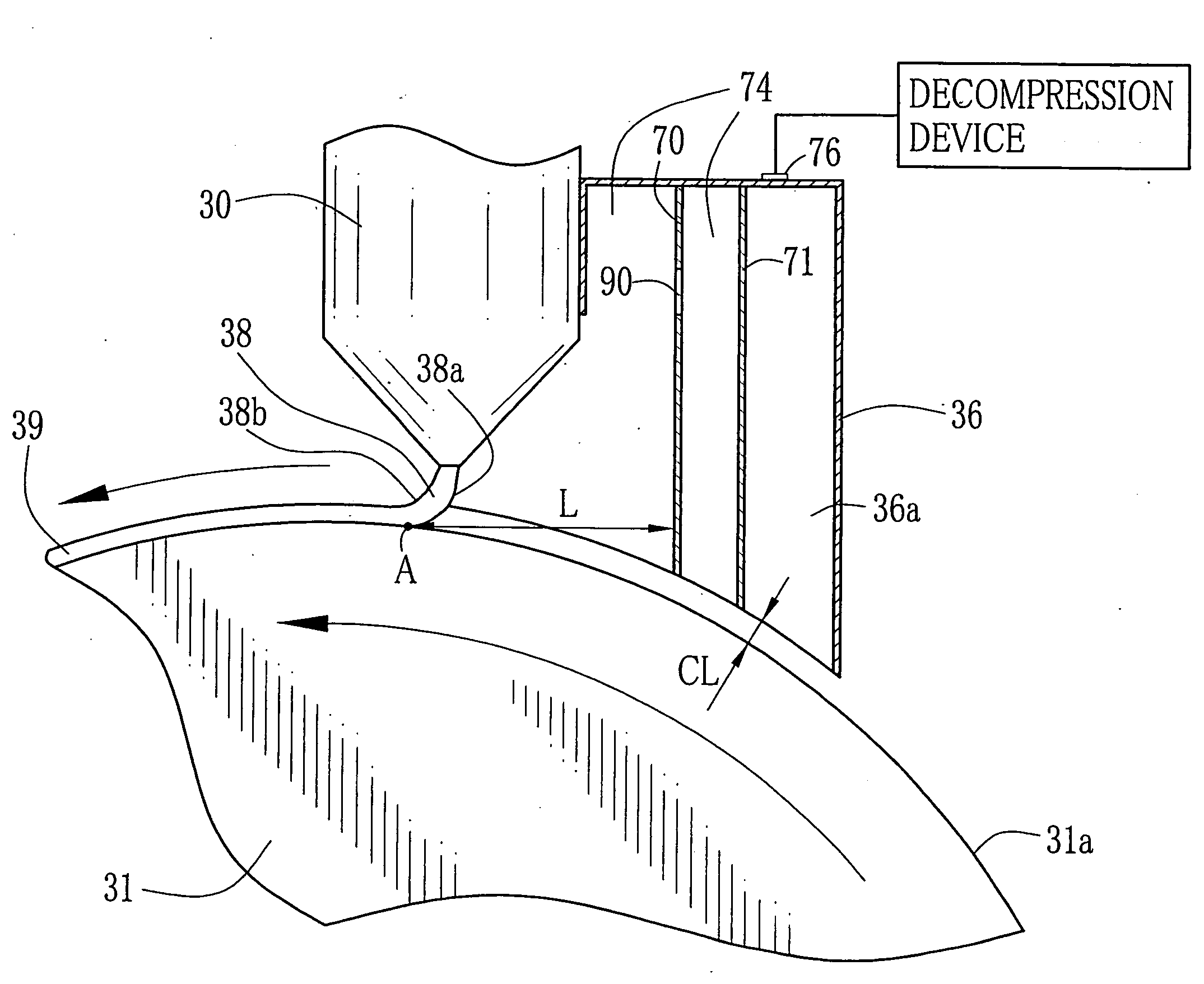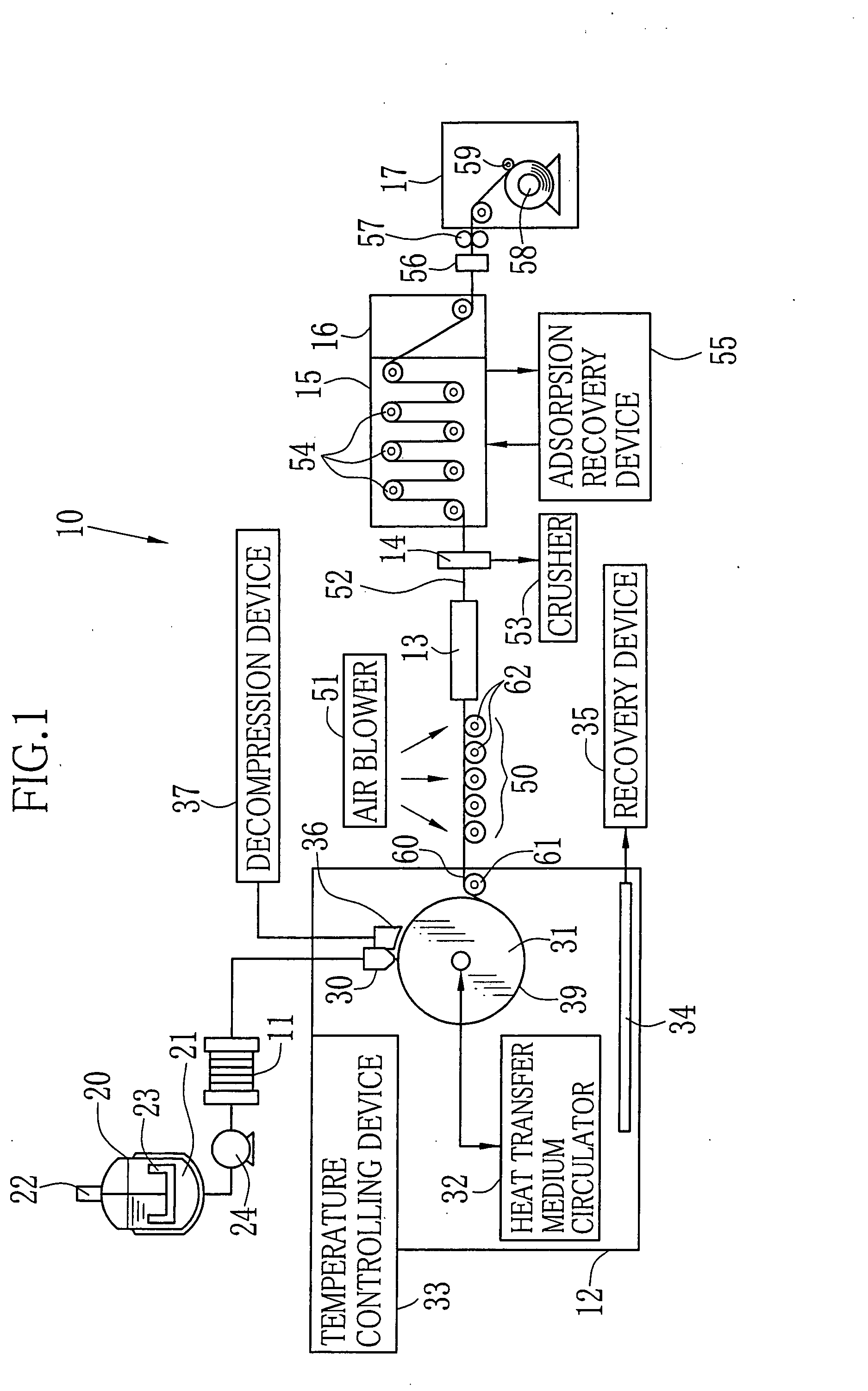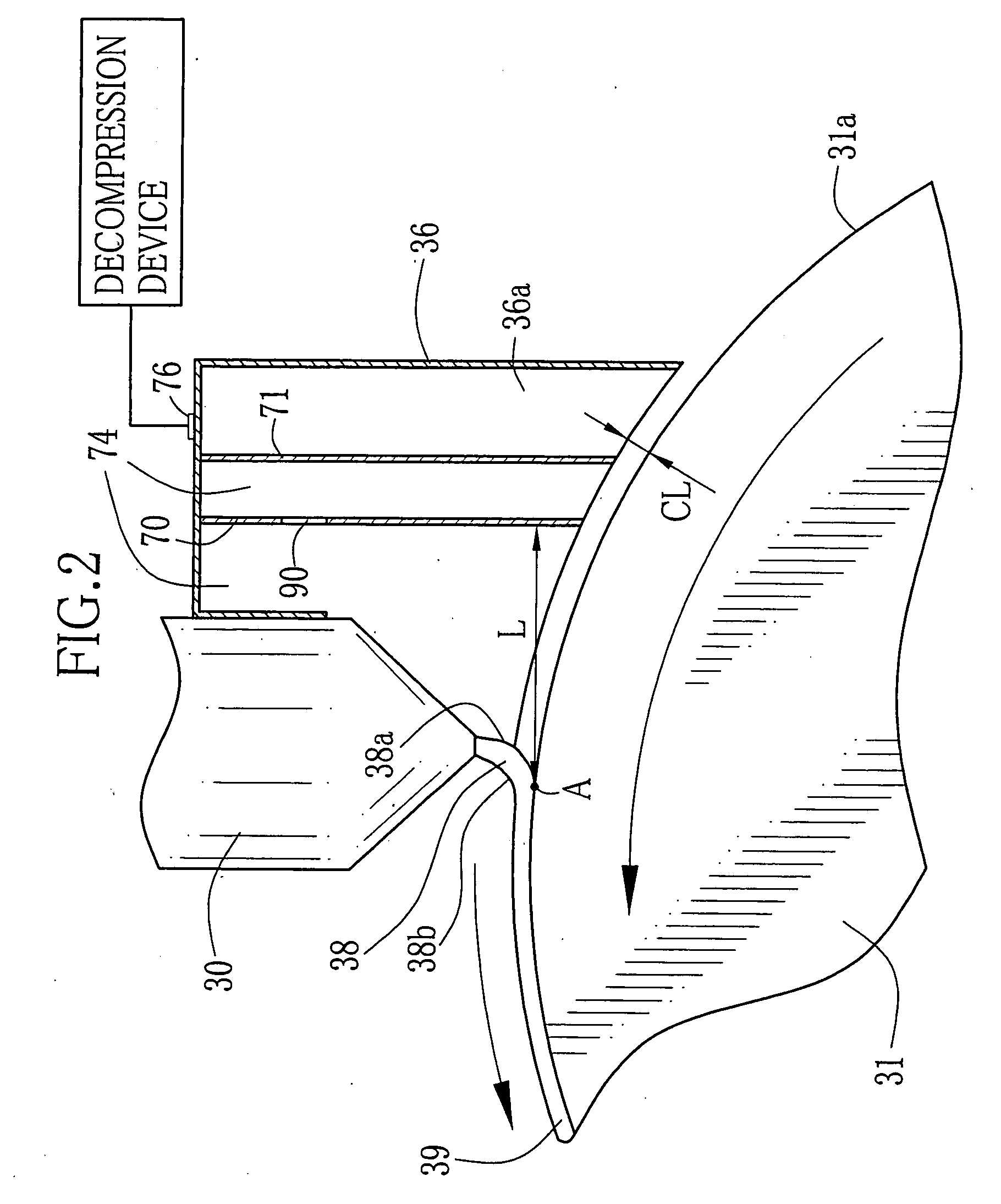Solution Casting Method
a casting method and film technology, applied in the field of film production methods, can solve problems such as uneven film thickness, and achieve the effects of preventing the change of casting bead thickness, preventing uneven film thickness, and preventing blowing
- Summary
- Abstract
- Description
- Claims
- Application Information
AI Technical Summary
Benefits of technology
Problems solved by technology
Method used
Image
Examples
embodiment 1
[0087]The embodiment 1 is described in the following. However, the present invention is not limited to the embodiment 1. Note that the detailed explanations are given in the experiment 1. Regarding the experiments 2 to 17 according to the present invention and the comparison experiment 18, experiment conditions and the results will be shown together in Table 1.
[0088]Each pts. mass of raw materials used in the embodiment 1 is as follows.
[0089][Composition]
Cellulose triacetate (fine particles whose degree of100pts. masssubstitution is 2.84, viscometric average degree ofpolymerization is 306, moisture content is2.0 mass %, viscosity of 6 mass % of dichloromethanesolution is 315 mPa · s, average particle diameteris 1.5 mm and average variation of the particlediameter is 0.5 mm)Dichloromethane (first solvent)384pts. massMethanol (second solvent)94pts. mass1-Butanol (third solvent)2pts. massPlasticizer A (Triphenylphosphate)7.6pts. massPlasticizer B (diphenylphosphate)3.8pts. massUV agent...
embodiment 2
[0122]The embodiment 2 is described in the following. However, the present invention is not limited to the embodiment 2. Note that the description is carried out in detail in the experiment 19. However, the description of the same experiment conditions as the experiment 1 is omitted. Further, regarding the experiments 20 to 27 according to the present invention and the comparison experiment 28, the experiment conditions and the results will be shown together in the Table 2 later.
[0123]Each pts. mass of the raw materials used in the experiment 19 is shown below.
[0124][Composition]
Cellulose triacetate (degree of substitution is 2.83,28pts. massviscometric average degree of polymerization is 320,moisture content is 0.4 mass %, viscosity of 6 mass %of dichloromethane solution is 305 mPa · s)Methyl Acetate75pts. massCyclopentanone10pts. massAcetone5pts. massMethanol5pts. massEthanol5pts. massPlasticizer A (Dipentaerythritol hexaacetate)1pts. massPlasticizer B (Triphenylphosphate)1pts. ma...
PUM
| Property | Measurement | Unit |
|---|---|---|
| distance | aaaaa | aaaaa |
| moving speed | aaaaa | aaaaa |
| thickness | aaaaa | aaaaa |
Abstract
Description
Claims
Application Information
 Login to View More
Login to View More - R&D
- Intellectual Property
- Life Sciences
- Materials
- Tech Scout
- Unparalleled Data Quality
- Higher Quality Content
- 60% Fewer Hallucinations
Browse by: Latest US Patents, China's latest patents, Technical Efficacy Thesaurus, Application Domain, Technology Topic, Popular Technical Reports.
© 2025 PatSnap. All rights reserved.Legal|Privacy policy|Modern Slavery Act Transparency Statement|Sitemap|About US| Contact US: help@patsnap.com



